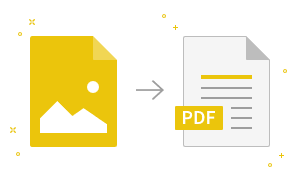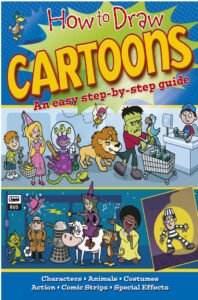NCERT Exemplar Problems Class 7 Science – Water: A Precious Resource
Question 1:
Which of the following does not show water shortage?
(a) Taps running dry
(b) Long queues for getting water
(c) Marches and protests for demand of water
(d) A family gets three buckets of water per person per day
Answer:
(d) According to the recommendation of United Nations (UN) minimum 50 litres of water per person per day should be provided.
Hence, three buckets (nearly 60 litres) of water is sufficient for a person for one day.
Question 2:
Seas and oceans are full of water on earth. However a very small percentage of water present on earth is available for us. This percentage is roughly.
(a) 006%
(b) 0.06%
(c) 0.6%
(d) 6%
Answer:
(a) Most of the water present on earth is not fit for consumption by us. Sea and oceans contain salty water which cannot be drunk. Even most of the fresh water is frozen as ice in glaciers and polar regions.
Hence, we are left with limited amount of water from lake, river and under the ground.
Question 3:
Which of the following are not the liquid forms of water?
(i) Snow
(ii) Lake water
(iii) River water
(iv) Water vapour
(v) Ice
Choose the correct combination from the options below
(a) (i), (iv) and (v)
(b) (i) and (ii)
(c) (ii) and (iii)
(d) (iv) only
Answer:
(a) Snow and ice are frozen while water vapour is in gaseous state. Water from lake and river are in liquid state.
Question 4:
A man digging the ground near a waterbody found that the soil was moist. As he kept digging deeper and deeper he reached a level, where all the spaces between particles of soil and gaps between rocks were filled with water. The upper limit of this layer is called
(a) water level
(b) water table
(c) groundwater
(d) water limit
Answer:
(b) The upper limit of the layer where water is present between particles of soil and gaps between rocks is called water table and water below this layer is called groundwater.
Question 5:
Which of the following is a way to use water economically?
(a) Construction of bawris
(b) Rainwater harvesting
(c) Drip irrigation
(d) Infiltration
Answer:
(c) Among the given options, drip irrigation is a way to use water economically because the installation of drip irrigation techniques require less amount of water.
Question 6:
On which of the following day is World Water Day observed?
(a) 22 March
(b) 14 November
(c) 2 October
(d) 21 December
Answer:
(a) 22 March is celebrated as the World Water Day.
Question 7:
The amount of water recommended by the United Nations for drinking, washing, cooking and maintaining proper hygiene per person per day is a minimum of
(a) 5 L
(b) 15 L
(c) 30 L
(d) 50 L
Answer:
(d) The amount of water recommended by the United Nations for drinking, washing, cooking and maintaining proper hygiene is a minimum of 50 litres per person per day.
Question 8:
‘Every Drop Counts’ is a slogan related to
(a) counting of drops of any liquid
(b) counting of water drops
(c) importance of water
(d) importance of counting
Answer:
(c) Every drop of water is precious for life to sustain on earth.
Question 9:
Water cycle does not involve which of the following?
(a) Evaporation
(b) Condensation
(c) Formation of clouds
(d) Rainwater harvesting
Answer:
(d) Water cycle does not involve rainwater harvesting. Rainwater harvesting involves recharging the groundwater.
Question 10:
Which of the following inhibits the seepage of rainwater into ground?
(a) A pukka floor
(b) Playground
(c) Grass lawn
(d) Forest land
Answer:
(a) A pukka or cemented floor is usually impervious to water, inhibiting the seepage of rainwater into grounds.
Very Short Answer Type Questions
Question 11:
State whether True/False.
(a) Water vapour is the gaseous form of water.
(b) Ice is solid, whereas snow is the semi-solid form of water.
(c) Ocean water cannot be used for domestic purposes.
(d) Rapid growth of industries is one of the cause for water shortage
Answer:
(a) True
(b) False, snow is also solid form of water.
(c) True
(d) True
Question 12:
Some definitions are given which can be corrected by changing one word. Correct them.
(a) Aquifer is groundwater stored between layers of hard rock above the water table.
(b) The process of evaporation of water in the ground is called infiltration.
(c) The evaporation of water from oceans and its arrival back into oceans is called vapour cycle.
Answer:
(a) Aquifer is groundwater stored between layers of hard rock below the water table.
(b) The process of seeping of water in the ground is called infiltration.
(c) The evaporation of water from oceans and its arrival back into oceans is called water cycle.
Question 13:
What is the source of water in each of the following?
(a) Wells
(b) Ground
(c) Atmosphere
Answer:
(a) The source of water in wells is groundwater.
(b) The source of water on ground is rain.
(c) The source of water in atmosphere is evaporation.
Question 14:
State whether True/False.
(a) The process of seeping of water into ground is called filtration.
(b) 51% of the earth’s surface is covered with water.
(c) Year 2003 was observed as the International year of freshwater.
(d) Snow and ice both are solid form of water.
Answer:
(a) False, the process of seeping of water into the ground is called infiltration.
(b) False, 71% of earth surface is covered with water.
(c) True
(d) True
Short Answer Type Questions
Question 15:
The rainwater and … from other sources such as rivers and ponds seep through the … and fills the empty spaces and cracks deep below the ground. The process of seeping of water into the ground is called … .
Answer:
(c) water, soil, infiltration
Question 16:
Rajasthan is a … and dry place. The challenge of natural… of water was met by a successful experiment. A band of social… had transformed a … area into a green place. They have revived five dried-up … by constructing water… structures.
Answer:
hot, scarcity, workers, dry, rivers, harvesting.
Question 17:
Place the following statements in a proper order to form a meaningful paragraph.
(a) Which inturn decreases the seepage of rainwater into the ground.
(b) This decreases the open areas like parks and playgrounds.
(c) Increasing population create demand for construction of houses, shops, offices, roads and pavements.
(d) This results in depletion of water table and creates scarcity of more water.
Answer:
Increasing population create demand for construction of houses, shops, offices, roads and pavements (c). This decreases the open areas like parks and playgrounds (b), which inturn decreases the seepage of rainwater into the ground (a).
This result in depletion of water table and creates scarcity of more water (d).
Question 18:
How can you observe the three forms of water (a) in nature and (b) at home?
Answer:
The three forms of water
(a) in nature are snow (solid), water (liquid) and water vapour (gas).
(b) at home are ice (solid), water (liquid) and steam (gas).
Question 19:
Complete the given table

Answer:
The complete table is given below:

Question 20:
Match the Column I with Column II.

Answer:
The correct matching is as given
(a)—(v), (b)—(iv). (c)—(i), (d)—(iii), (e)—(ii)
Question 21:
A list of jumbled words are given here, write the correct form of each word.
(a) WASHFERRET
(b) CHARREGE
(c) QUIFERA
(d) WOSN
Answer:
(a) FRESH WATER
(b) RECHARGE
(c) AQUIFER
(d) SNOW
Question 22:
From where do the following usually get water? In which form is water present in them?
(a) Clouds
(b) Plants
(c) Mountain tops
(d) Aquifer
(e)Animals
Answer:

Long Answer Type Questions
Question 23:
Complete the following chart by writing appropriate words in the boxes marked (a) to (e).

Answer:
(a) Solid
(b) Gaseous
(c) Well
(d) Lake
(e) Ice
Question 24:
What is groundwater? What are the sources of water which are fed by groundwater?
Answer:
Water below the water table where water is found between particles of soil and between rocks is called groundwater. Water table is the upper level of water under the ground which occupies all the spaces in the soil and rocks.
The ground water provide water to wells, bawris, tube wells, hand pumps.
Question 25:
Water is very precious for all the living beings. What will happen in future, if we do not save water now?
Answer:
Water is needed for various life activities. If we continue the misuse of water and do not conserve it, the groundwater level will be depleted. This may result into various consequences like:
(i) Lowering of the water table Excessive pumping can lower the groundwater table.
(ii) Reduced surface water supply Groundwater and surface water are connected. When groundwater is over used, the lakes, streams and rivers connected to groundwater, can also have little supply.
(iii) Loss of plants from land We fully depend on the plants for food directly or indirectly. Plants need water to prepare their food. If there will be scarcity of water on earth, the plants will be unable to prepare their food. This inturn will lead to the end of the life because world without plants means no food, no oxygen, not enough rain and other innumerable problems.
Therefore, it is true that water is a precious resource.

